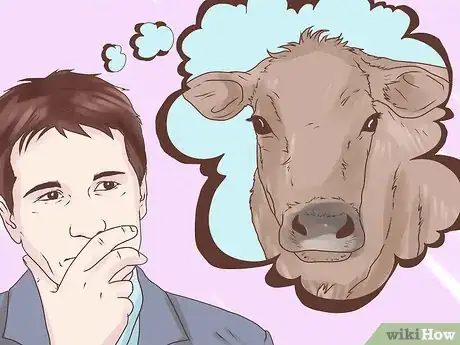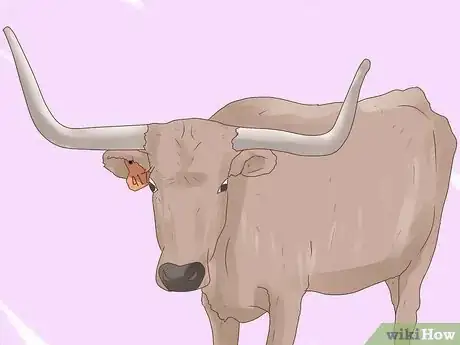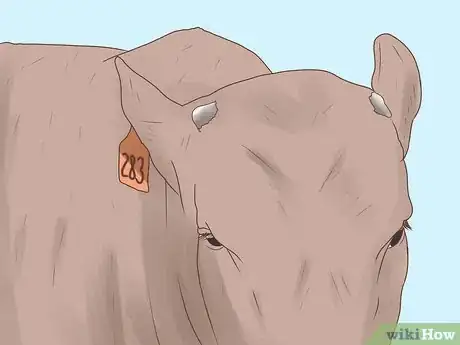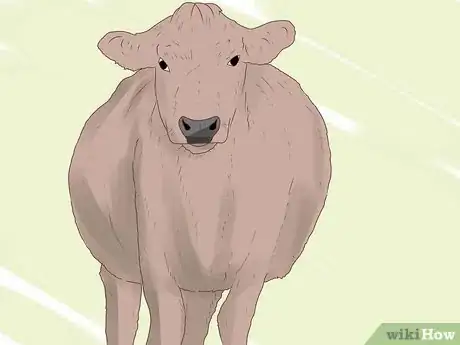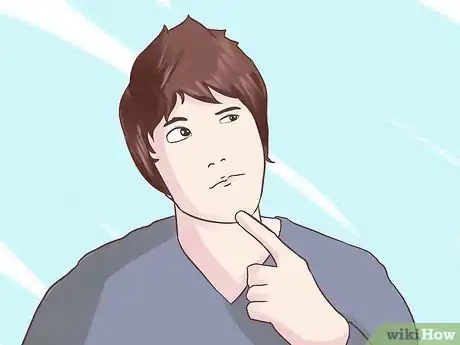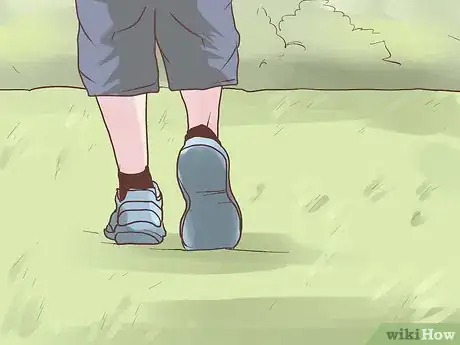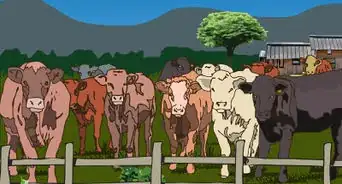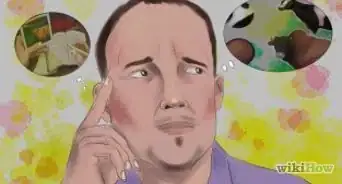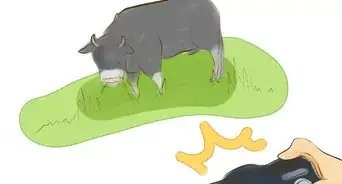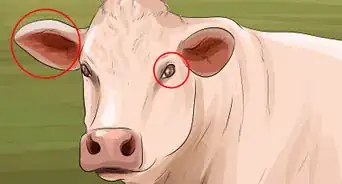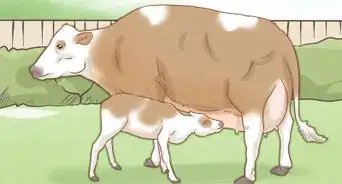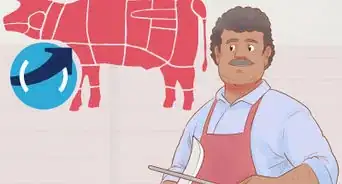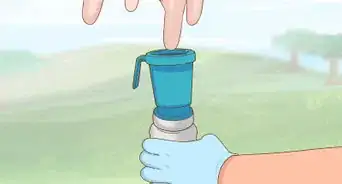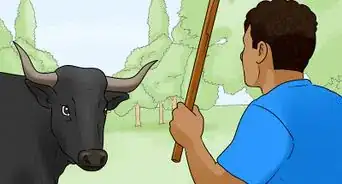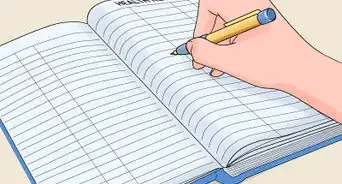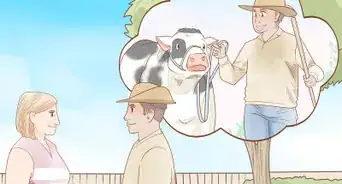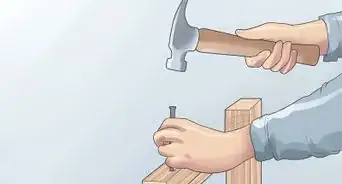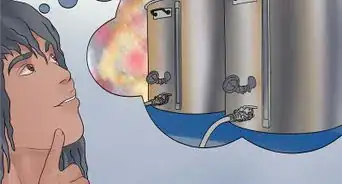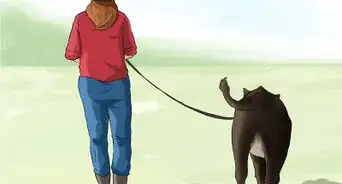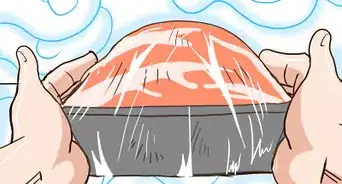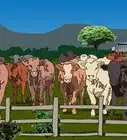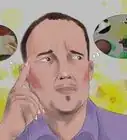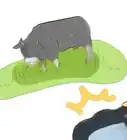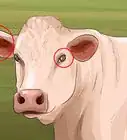This article was co-authored by Karin Lindquist. Karin Lindquist earned a BSc in Agriculture as an Animal Science major from the University of Alberta, Canada. She has over 20 years of experience working with cattle and crops. She's worked for a mixed-practice veterinarian, as a sales representative in a farm supply store, and as a research assistant doing rangeland, soil, and crop research. She currently works as a forage and beef agriculture extension specialist, advising farmers on a variety of issues relating to their cattle and the forages they grow and harvest.
This article has been viewed 75,040 times.
Identifying the difference between horned, dehorned, scurred/polled and polled cattle can be extremely important when working on farms or ranches and is a good skill to have.
Steps
-
1Study the characteristics and differences of each type of cattle. The following process will explain each identification strategy.
-
2Observe the characteristic of horns in cattle. Horns are probably the most obvious and well-known characteristic of all bovines. All cattle are capable of having horns and it is not a sex-linked trait or a trait only meant for bulls or steers to have. The poll is flat and the horns of a bovine are found on opposite sides of an animal's head, immediately above the ears and point outwards, upwards or downwards on either side of the head. They are made of keratin and bone and are filled with blood vessels, and stay with a bovine throughout its life, unless they are removed manually or are broken off from getting a horn stuck somewhere where it cannot be removed without removing the horn itself.
- The way horns grow ultimately depends on the breed. Horns that grow outward then curve up is a characteristic typically found in most to all European/British breeds such as Texas Longhorn, Florida Cracker/Pineywoods, Corriente and Scottish Highland cattle breeds. English Longhorn is the only breed that have the horns of cattle growing downwards. With the majority of the Bos indicus breeds though, like that of Brahman cattle, horns point out and up. A large number of African Bos Taurus breeds such as Ankole cattle also have their horns pointing more up than out.
- Almost all cattle breeds in the world are naturally horned. Those that are not naturally horned will be mentioned further on below.
- Animals that have had their horns removed are still considered horned, not polled.
- Dehorned cattle are cattle which have had their horns removed, usually a few days after birth or around or after being weaned. Proper dehorning removes the entire horn and the horn bud right to the skull, leaving a circular bare patch above the ears. Dehorned cattle should never be considered polled, especially from a genetics point of view. Dehorned cattle typically have a flat-looking poll, unlike that of truly polled cattle, described below.
- Animals that have had their horns removed are still considered horned, not polled.
Advertisement -
3Understand the characteristic of "scurred", found in some cattle. Scurred is a characteristic that can be present in cattle that have been selected to be polled but are historically known to be horned. Scurred is a term describing the soft incomplete buds that would otherwise develop into bony horns. These buds are typically soft and loose or malleable on a bovine's head.
- The scurred trait can be found in any breed that comprises both polled and horned cattle, but has also been known to crop up in naturally polled breeds, especially like that in Angus or Red Angus cattle. Other breeds that scurs can occur in are:
-
4Understand what polled cattle are. Polled cattle have absolutely no horns, nor scurs nor bare spaces where a pair of horns may have been, whatsoever. The best way to tell is if a cow, bull, steer or heifer is polled is by looking at the poll, itself located just above and between the ears. If it forms some sort of peak, then the animal is indeed polled, not horned, scurred or dehorned.
- Many cattle breeds that are being used for commercial beef and dairy which have been historically horned also have cattle which are polled. This includes all breeds listed above, and others not mentioned. Naturally polled breeds, though, do not have both horned and polled cattle. Such breeds include the following:
- Angus (also known as Black Angus)
- Red Angus
- Galloway
- Belted Galloway
- Red Poll
- British White
- American White Park
- Speckle Park
- Brangus
- Red Brangus
- Murray Grey.
- Many cattle breeds that are being used for commercial beef and dairy which have been historically horned also have cattle which are polled. This includes all breeds listed above, and others not mentioned. Naturally polled breeds, though, do not have both horned and polled cattle. Such breeds include the following:
-
5Memorize the characteristics of each trait.
-
6Go on a field trip or road trip to see if you can find any farms and ranches that have cattle that are polled, horned, scurred or dehorned. Take pictures of what you think are cattle of each of the four characteristics, and analyze those pictures when you get back home.
- Note that finding scurred cattle is much rarer than finding polled, horned or dehorned cattle.
Community Q&A
-
QuestionDoes bull castration have any effect on horn growth?
 KarinTop AnswererNo. The horns of a steer can get as big as a bull's, if that steer is left to live to a ripe old age.
KarinTop AnswererNo. The horns of a steer can get as big as a bull's, if that steer is left to live to a ripe old age.
Warnings
- Horned cattle are much more dangerous (not to mention intimidating) than polled cattle. Always be careful when being around these animals.⧼thumbs_response⧽
